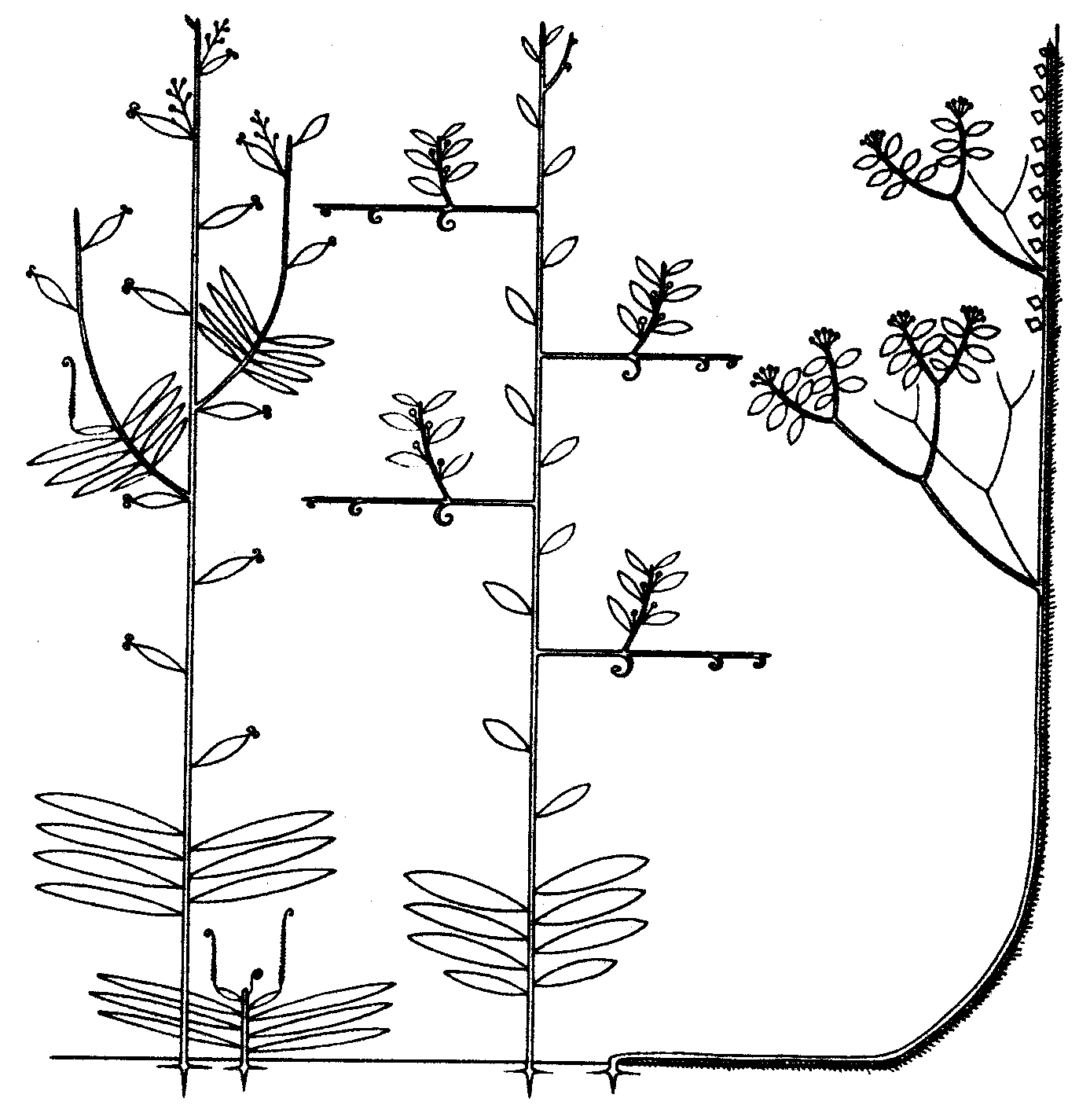4.2: Architectural Models of Tropical Trees- Illustrated Key
- Page ID
- 49675
Tropical landscape is full of trees. They rarely flower or bear fruits, and often have very similar leaves. However, shapes and structures of trunks and crowns (so similar in temperate regions) are seriously different in tropics. If you want to know tropics better, you should learn these architectural models.
The following key is based on Halle, Oldeman and Thomlinson (1978) “Tropical Trees and Forests” (pp.84–97).
1. Stem strictly unbranched (Monoaxial trees) ...... 2.
— Stems branched, sometimes apparently unbranched in Chamberlain’s model (polyaxial trees) ...... 3.
2. Inflorescence terminal ...... Holttum’s model.
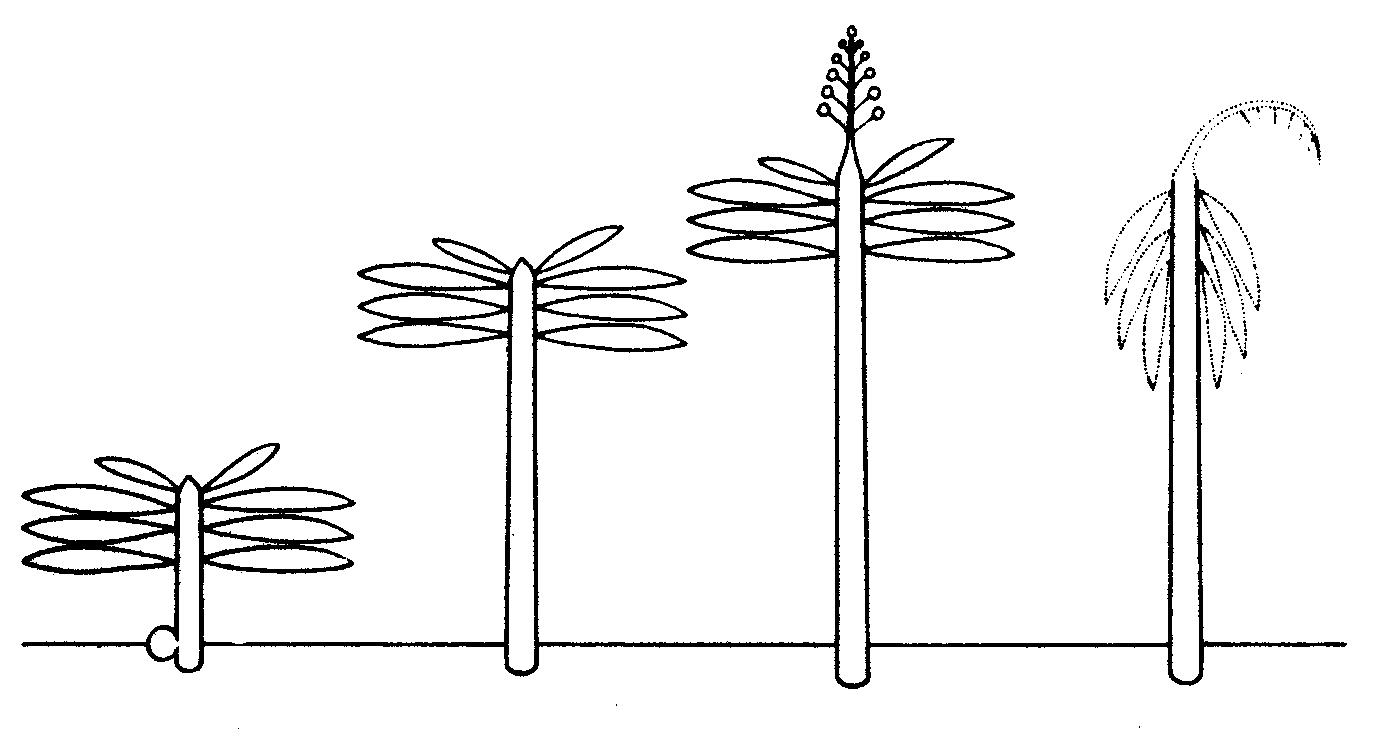
Monocotyledon: Corypha umbraculifera (Talipot palm—Palmae). Dicotyledon: Sohnreyia excelsa (Rutaceae).
— Inflorescences lateral ...... Corner’s model.
(a) Growth continuous:

Monocotyledon: Cocos nucifera (coconut palm—Palmae), Elaeis guineensis (African oil palm—Palmae). Dicotyledon: Carica papaya (papaya—Caricaceae).
(b) Growth rhythmic:
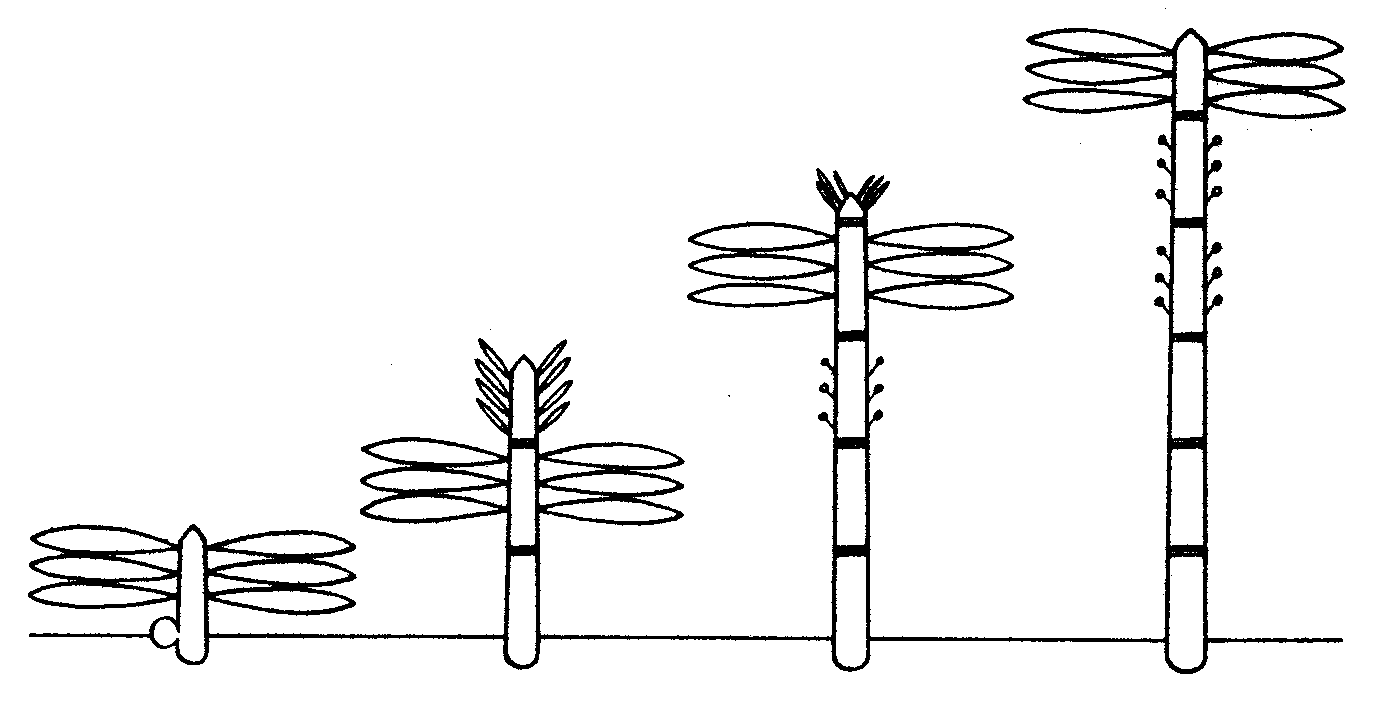
Gymnosperm: Female Cycas circinalis (Cycadaceae). Dicotyledon: Trichoscypha ferntginea (Anacardiaceae).
3(1). Vegetative axes all equivalent, homogenous (not partly trunk, partly branch), most often orthotropic and modular ...... 4.
— Vegetative axes not equivalent (homogenous, heterogenous or mixed but always clear difference between trunk and branches) ...... 7.
4. Basitony, i.e., branches at the base of the module, commonly subterranean, growth usually continuous, axes either hapaxanthic or pleonanthic ...... Tomlinson’s model.
(a) Hapaxanthy, i.e., each module determinate, terminating in an inflorescence:
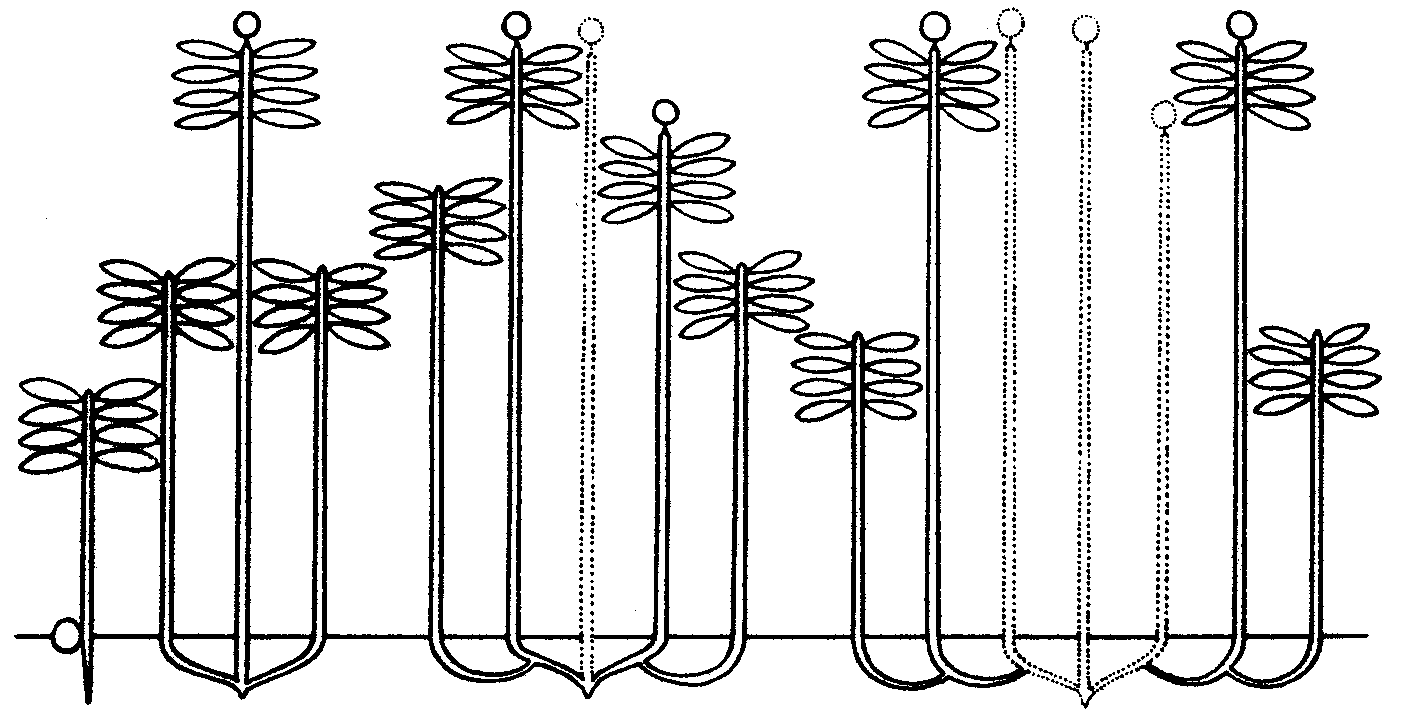
Monocotyledon: Musa cv. sapientum (banana—Musaceae). Dicotyledon: Lobelia gibberoa (Lobeliaceae).

(b) Pleonanthy, i.e., each module not determinate, with lateral inflorescences
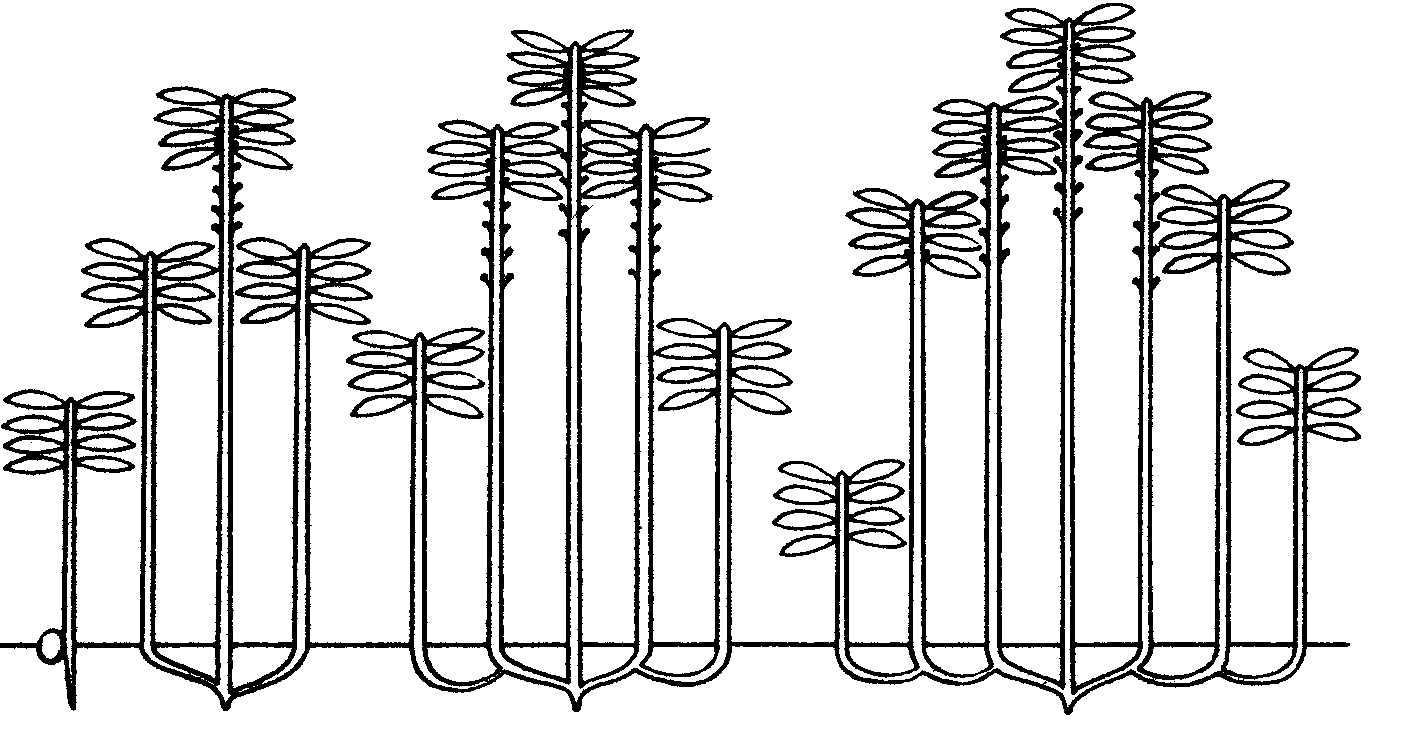
Monocotyledon: Phoenix dactylifera (date palm—Palmae).
— Acrotony, i.e., branches not at the base but distal on the axis ...... 5.
5. Dichotomous branching by equal division of apical meristem ...... Schoute’s model.

Monocotyledons:
Vegetative axes orthotropic: Hyphaene thebaica (doum palm—Palmae).
Vegetative axes plagiotropic: Nypa fruticans (nipa palm—Palmae)
— Axillary branching, without dichotomy ...... 6.
6. One branch per module only; sympodium one-dimensional, linear, monocaulous, apparently unbranched, modules hapaxanthic, i.e., inflorescences terminal ...... Chamberlain’s model.
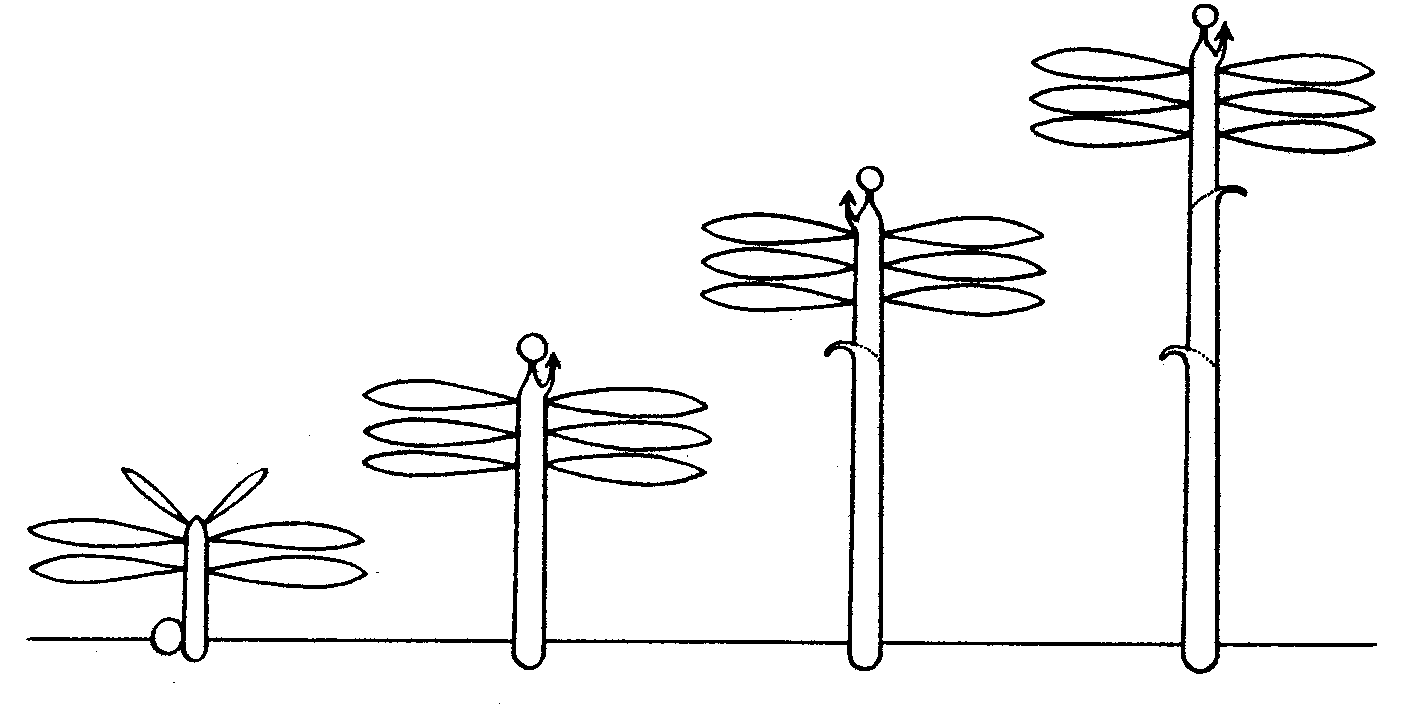
Gymnosperm: Male Cycas circinalis (Cycadaceae). Monocotyledon: Cordyline indivisa (Agavaceae). Dicotyledon: Talisia mollis (Sapindaceae).
— Two or more branches per module; sympodium three-dimensional, nonlinear, clearly branched; inflorescences terminal ...... Leeuwenberg’s model.
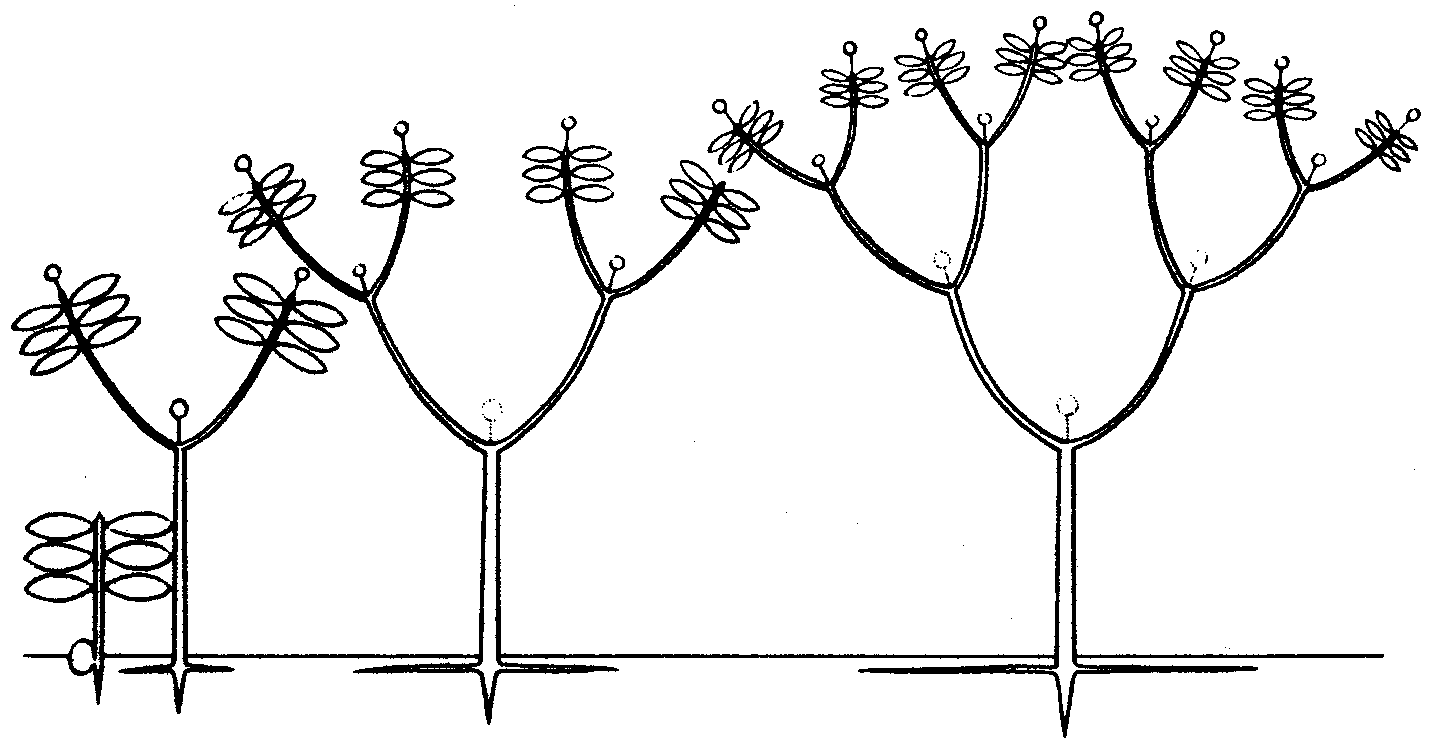
Monocotyledon: Dracaena draco (dragon tree—Agavaceae). Dicotyledon: Ricinus communis (castor-bean), Manihot esculenta (cassava), both Euphorbiaceae.
7(3). Vegetative axes heterogeneous, i.e., differentiated into orthotropic and plagiotropic axes or complexes of axes ...... 8.
— Vegetative axes homogeneous, i.e., either all orthotropic or all mixed ...... 18.
8. Basitonic (basal) branching producing new (usually subterranean) trunks ...... McClure’s model.
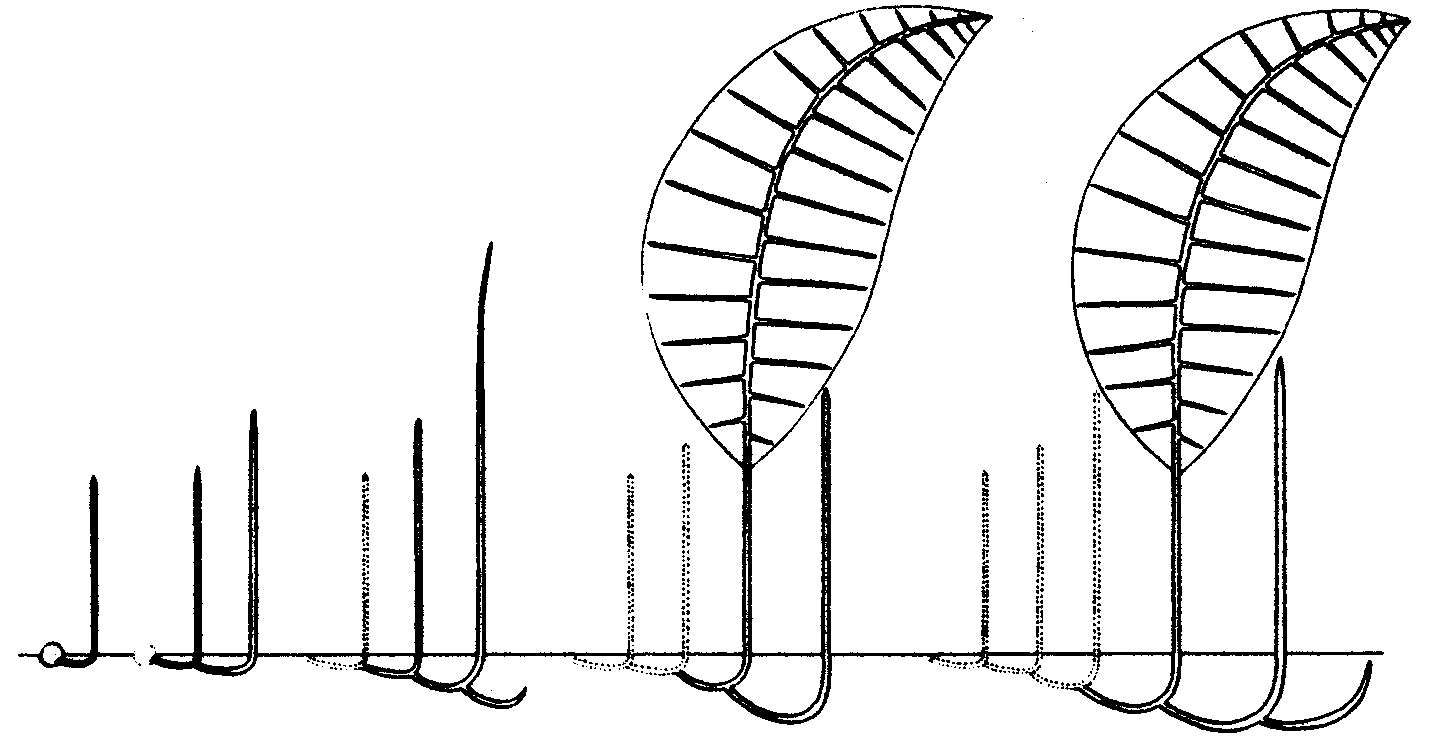
Monocotyledon: Bambusa arundinacea (bamboo—Gramineae / Bambusoideae). Dicotyledon: Polygonum cuspidatum (Polygonaceae).
— Acrotonic (distal) branching in trunk formation (never subterranean) ...... 9.
9. Modular construction, at least of plagiotropic branches; modules generally with functional (sometimes with more or less aborted) terminal inflorescences ...... 10.
— Construction not modular; inflorescences often lateral but always lacking any influence on main principles of architecture ...... 13.
10. Growth in height sympodial, modular ...... 11.
— Growth in height monopodial, modular construction restricted to branches ...... 12.
11. Modules initially equal, all apparently branches, but later unequal, one becoming a trunk ...... Koriba’s model.

Dicotyledon: Hura crepitans (sand-box tree—Euphorbiaceae).
— Modules unequal from the start, trunk module appearing later than branch modules, both quite distinct ...... Prevost’s model.

Dicotyledon: Euphorbia pulcherrima (poinsettia—Euphorbiaceae), Alstonia boonei (emien—Apocynaceae).
12(10). Monopodial growth in height rhythmic ...... Fagerlind’s model.
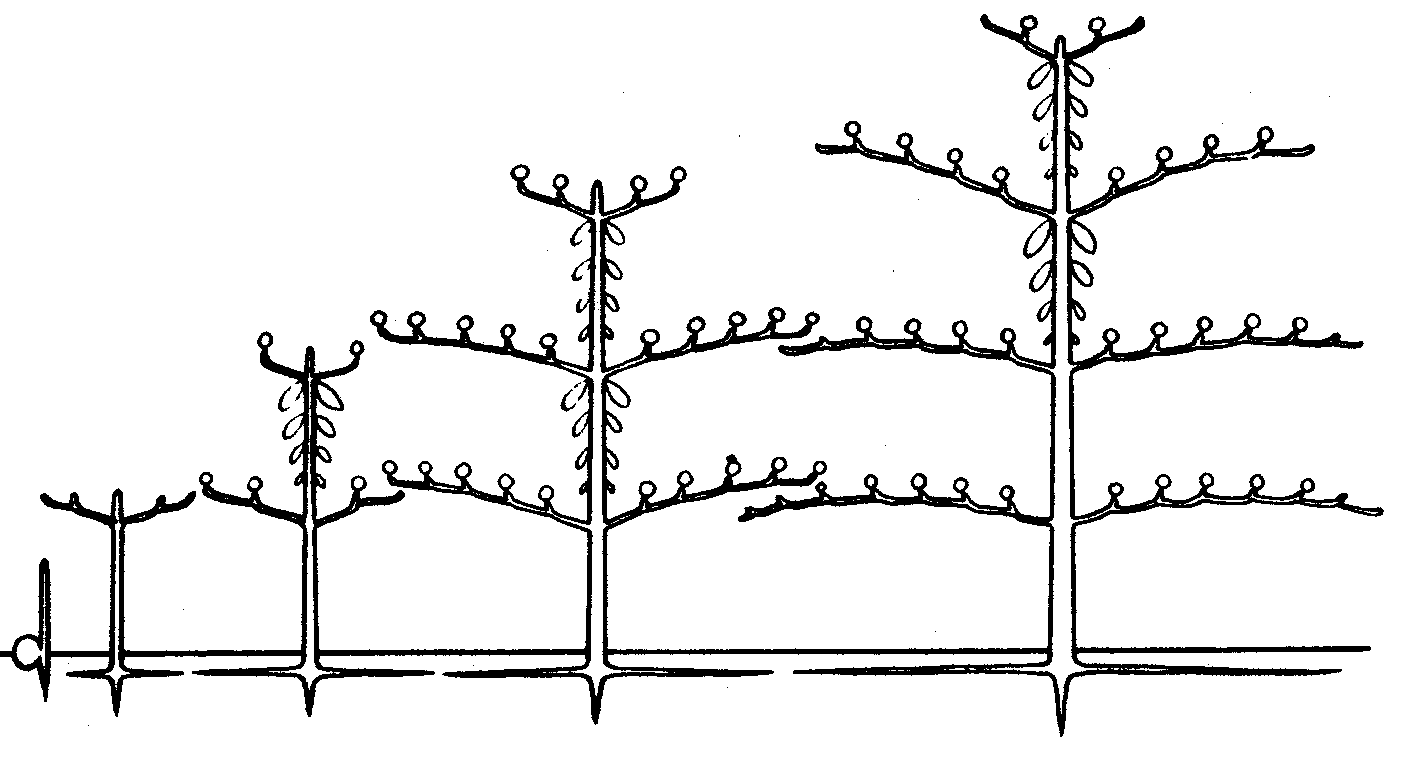
Dicotyledon: Cornus alternifolius (dogwood—Cornaceae), Fagraea crenulata (Loganiaceae), Magnolia grandiflora (Magnoliaceae):
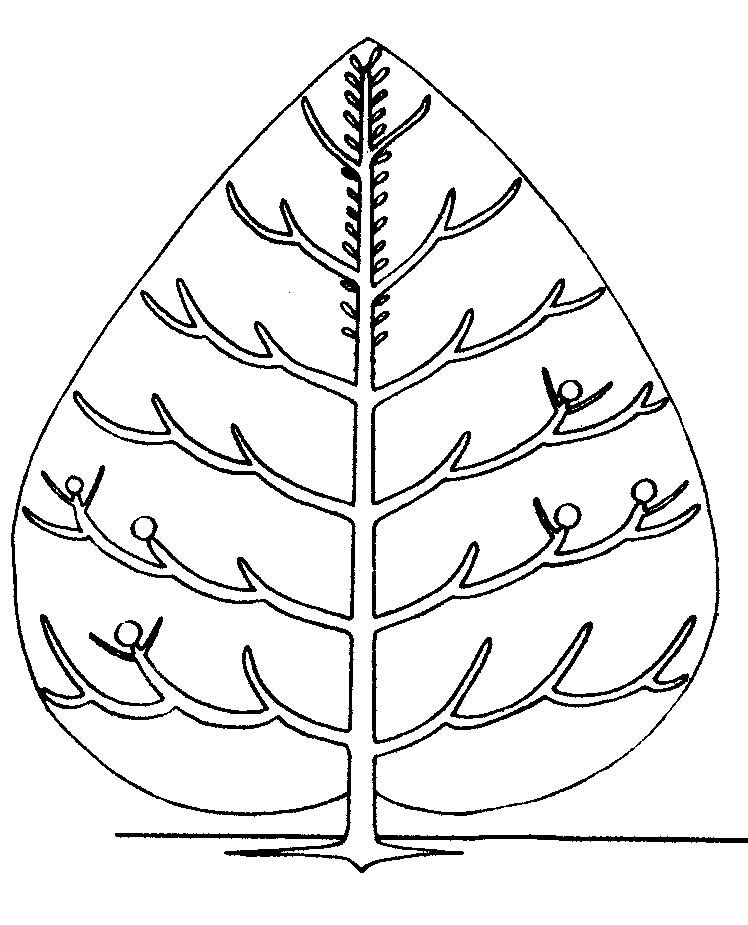
— Monopodial growth in height continuous ...... Petit’s model.

Dicotyledon: Gossypium spp. (cottons—Malvaceae).
13(9). Trunk a sympodium of orthotropic axes (branches either monopodial or sympodial, but never plagiotropic by apposition) ...... Nozeran’s model.
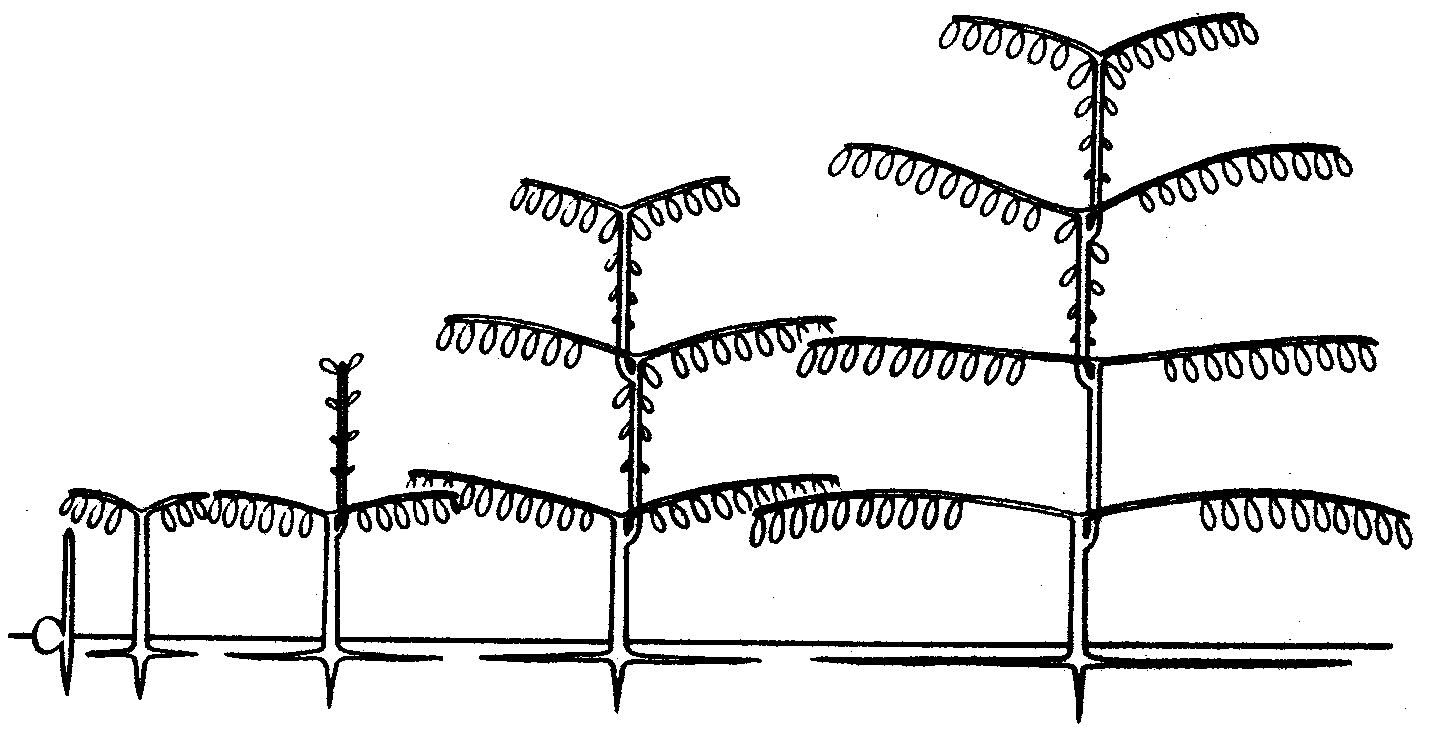
Dicotyledon: Theobroma cacao (cocoa—Sterculiaceae).
— Trunk an orthotropic monopodium ...... 14.
14. Trunk with rhythmic growth and branching ...... 15.
— Trunk with continuous or diffuse growth and branching ...... 16.
15. Branches plagiotropic by apposition ...... Aubreville’s model.
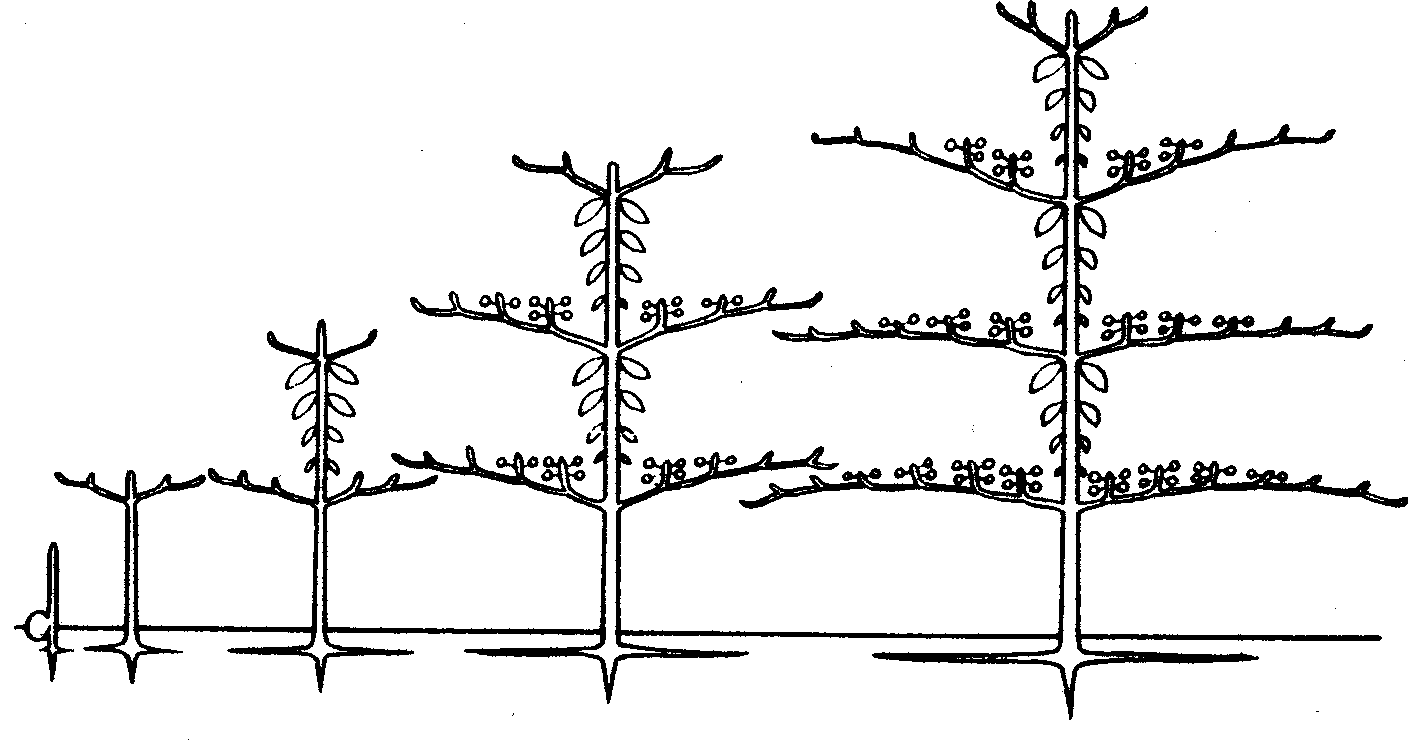
Dicotyledon: Terminalia catappa (sea-almond—Combretaceae).
Theoretical Model II defined as an architecture resulting from growth of a meristem producing a sympodial modular trunk, with tiers of branches also modular and plagiotropic by apposition, has still not been recognized in a known example. It would occur here, next to Aubreville’s model from which it differs in its sympodial trunk.
— Branches plagiotropic but never by apposition, monopodial or sympodial by substitution ...... Massart’s model.

Gymnosperms: Araucaria heterophylla (Norfolk Island pine—Araucariaceae). Dicotyledon: Ceiba pentandra (kapok—Bombacaceae), Myristica fragrans (nutmeg—Myristicaceae).
16(14). Branches plagiotropic but never by apposition, monopodial or sympodial by substitution ...... 17.
— Branches plagiotropic by apposition ...... Theoretical model I.

Dicotyledon: Euphorbia sp. (Euphorbiaceae)
17. Branches long-lived, not resembling a compound leaf ...... Roux’s model.

Dicotyledon: Coffea arabica (coffee—Rubiaceae), Bertholletia excelsa (Brazil nut—Lecythidaceae).
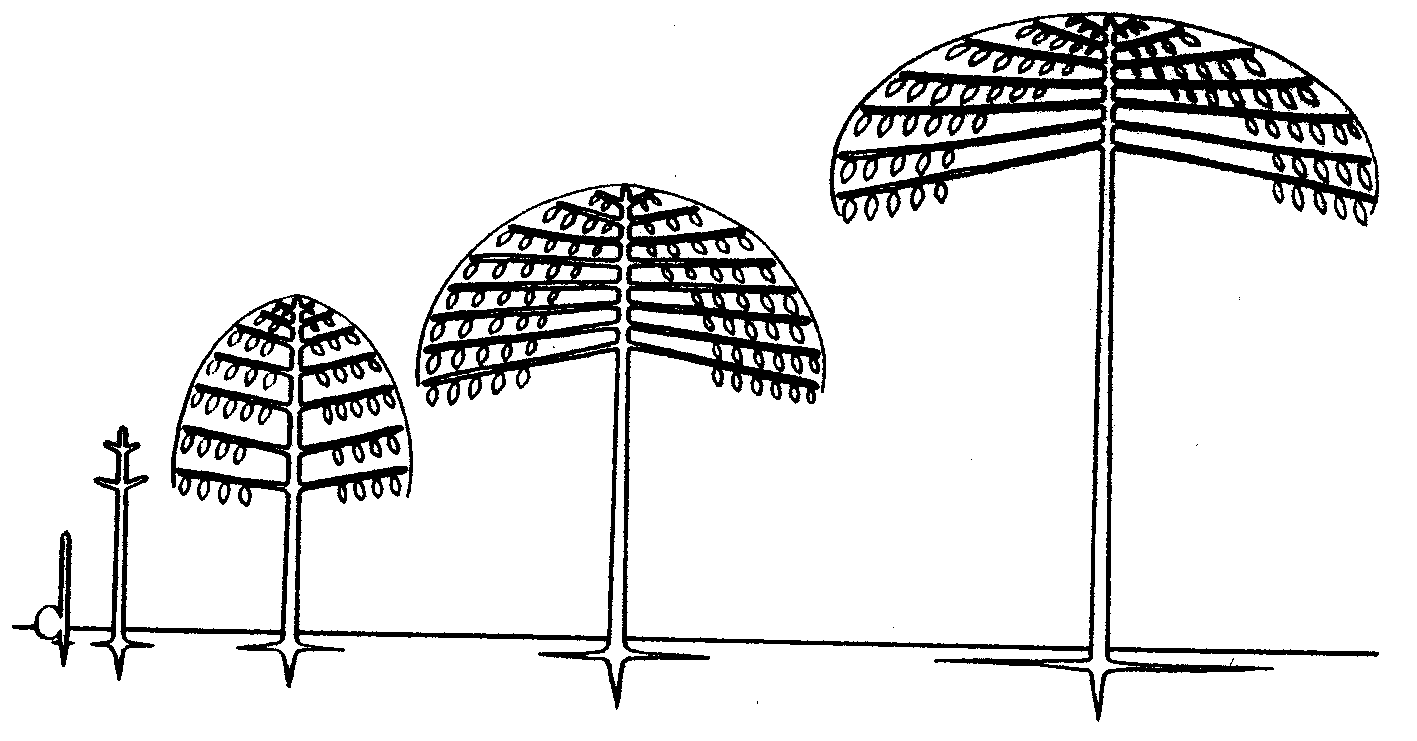
— Branches short-lived, phyllomorphic, i.e., resembling a compound leaf ...... Cook’s model.
Dicotyledon: Castilla elastica (Ceara rubber tree—Moraceae)
18(7). Vegetative axes all orthotropic ...... 19.
— Vegetative axes all mixed ...... 22.
19. Inflorescences terminal, i.e., branches sympodial and, sometimes in the periphery of the crown, apparently modular ...... 20.
— Inflorescences lateral, i.e., branches monopodial ...... 21.
20. Trunk with rhythmic growth in height ...... Scarrone’s model.

Monocotyledon: Pandanus vandamii (Pandanaceae). Dicotyledon: Mangifera indica (mango—Anacardiaceae).
— Trunk with continuous growth in height ...... Stone’s model.

Monocotyledon: Pandanus pulcher (Pandanaceae). Dicotyledon: Mikania cordata (Compositae)
21(19). Trunk with rhythmic growth in height ...... Rauh’s model.

Gymnosperm: Pinus caribaea (Honduran pine—Pinaceae). Dicotyledon: Hevea brasiliensis (Para rubber tree—Euphorbiaceae).
— Trunk with continuous growth in height ...... Attims’model.
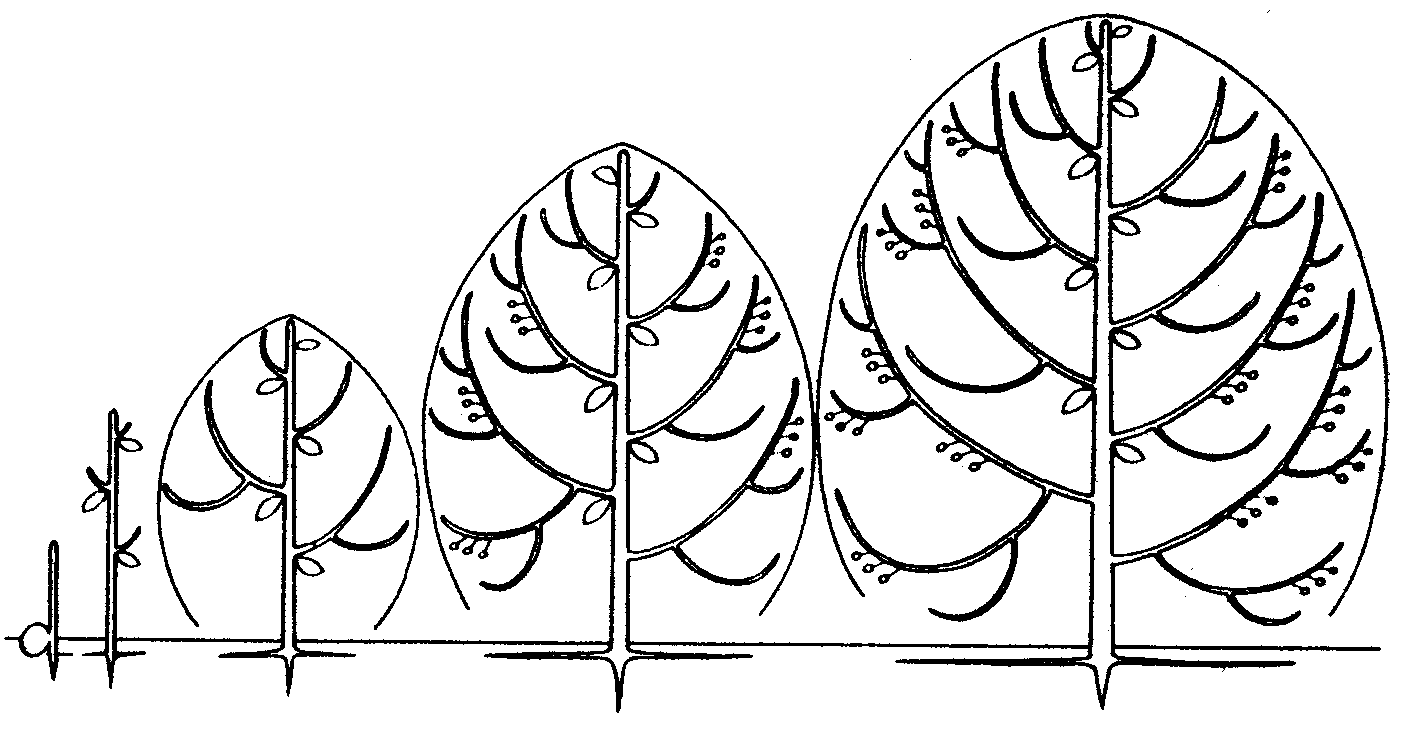
Dicotyledon: Rhizophora racemosa (Rhizophoraceae)
22(18). Axes clearly mixed by primary growth, at first (proximally) orthotropic, later (distally) plagiotropic ...... Mangenot’s model.
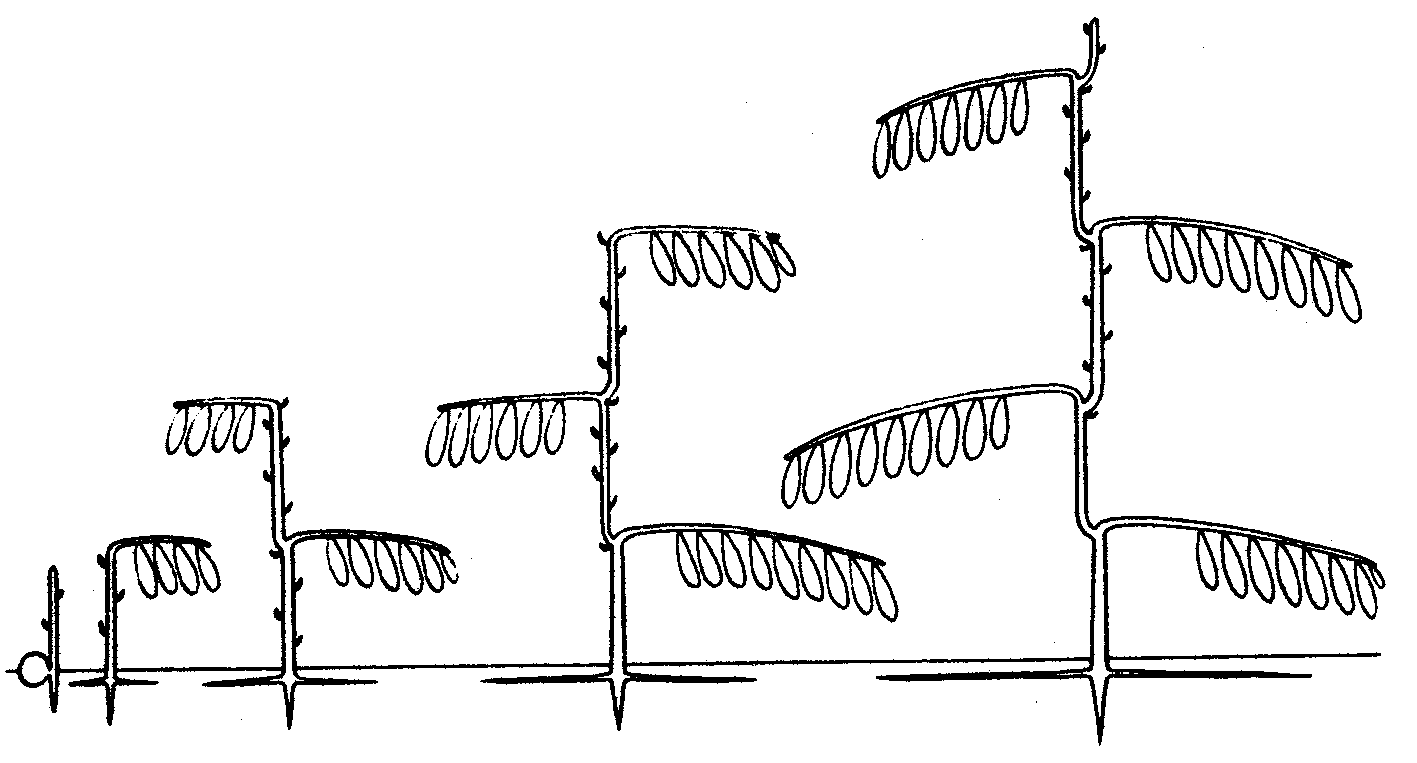
Dicotyledon: Strychnos variabilis (Loganiaceae).
— Axes apparently mixed by secondary changes ...... 22.
23. Axes all orthotropic, secondarily bending (probably by gravity) ...... Champagnat’s model.
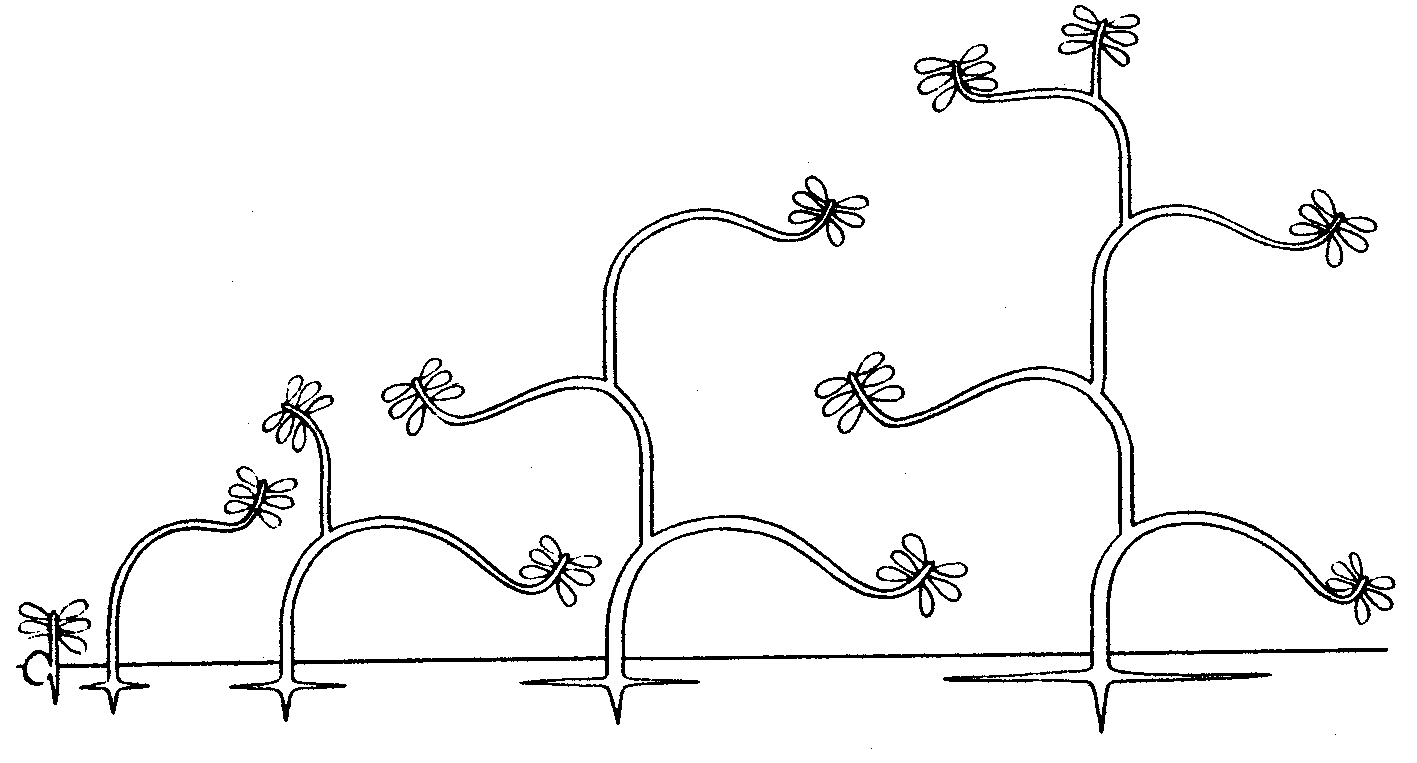
Dicotyledon: Bougainvillea glabra (Nyctaginaceae).
— Axes all plagiotropic, secondarily becoming erect, most often after leaf-fall ...... Troll’s model.
Dicotyledon: Annona muricata (custard apple—Annonaceae), Averrhoa carambola (carambola—Oxalidaceae), Delonix regia (poinciana—Leguminosae / Caesalpinioideae)
(a) Trunk a monopodium (e.g., Cleistopholis patens—Annonaceae):
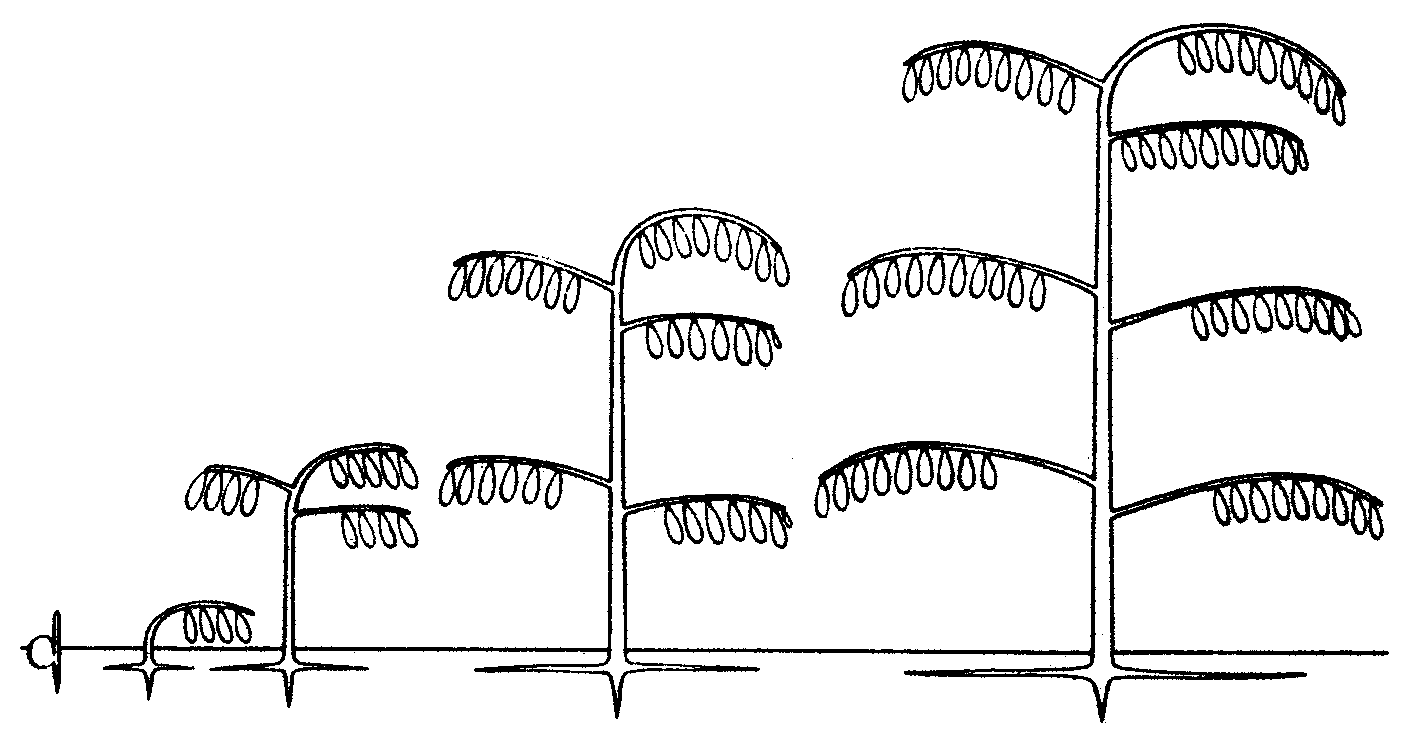
(b) Trunk a sympodium (e.g., Parinari excelsa—Rosaceae):
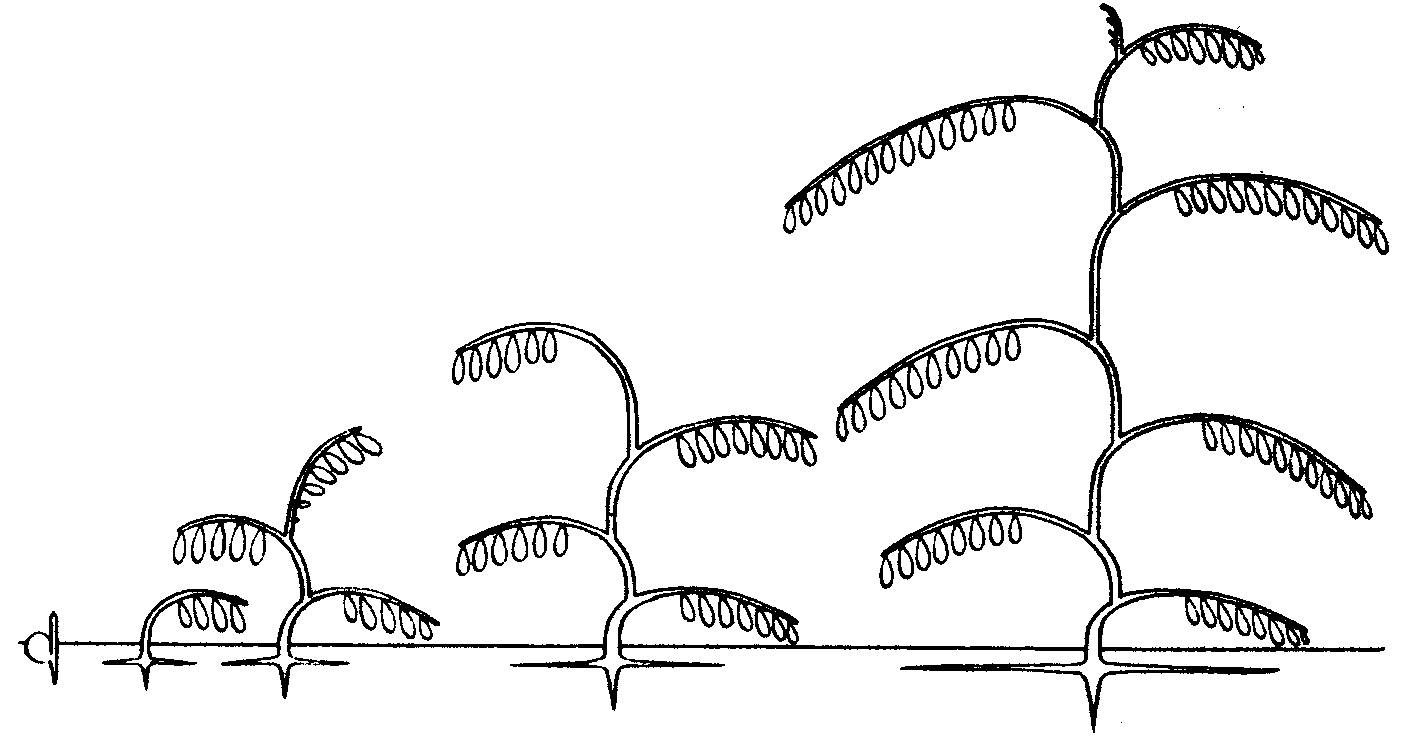
Some woody vines do not conform with known tree models, e.g. Triphyophyllum pellalum, Ancistrocladus abbreviatus and Hedera helix:
